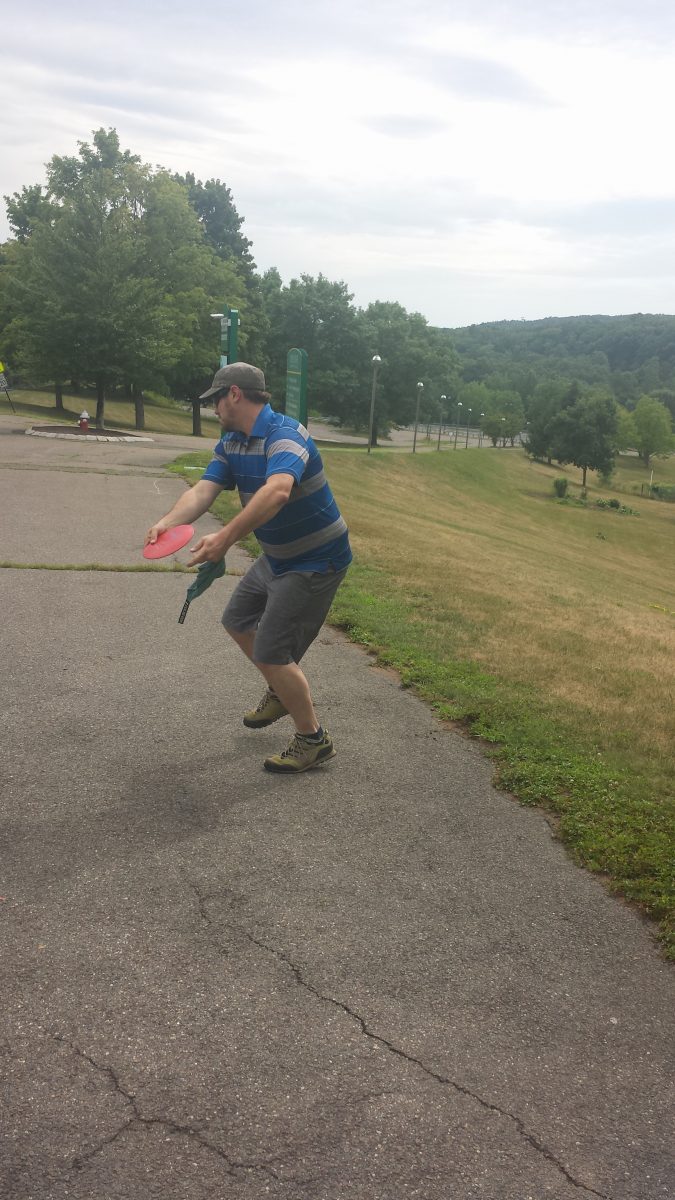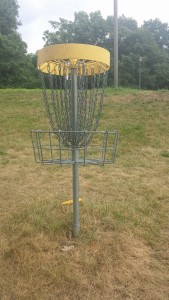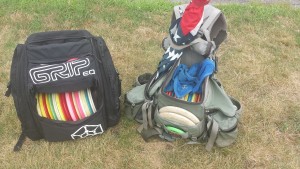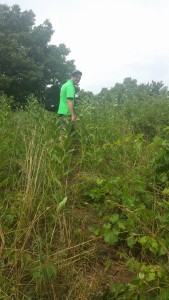SOUTHWICK–With a new sports facility being pitched to the town, people in the area are wondering, “just what is disc golf, anyway?”
Well, that’s what I asked, at least.
So, one of the co-owners of Pure Flight Disc Golf, Pete Charron, along with his two friends, fellow disc golfers and those helping to design the Southwick course, Chris Barden and Drew Gardner, took me along to a course at Holyoke Community College to teach me about the game. And in the process, I also learned what draws people to the sport.
To begin though, the simplest way to describe the sport is that it’s like conventional golf but with discs–and some hiking. The players start off in a tee box, then throw their first shot–called a drive– with their driver disc and aim it toward the green where a basket is located, similar to a hole in golf. Then, when they get close enough to the basket, they traditionally use putters–which are discs weighted differently that allow for slower, shorter and more accurate travel–to try and put it in the hole, or basket. Along the way, each shot is counted as a stroke, just like golf, and you can get an ace, eagle, birdie, par, bogey and so on–just like golf. Also, you do this 18 times. Again, just like golf. Also, you carry around the discs in a bag–you get the point.
So yes, the sport is a lot like golf. Except not quite.
For one thing, the cost of the game itself is really quite affordable.
“You only need one disc to begin playing,” Charron said. “Discs cost as little as $9 to $18.”
Of course, if you want to be “scratch golfers” like Charron and Barden, you may end up purchasing more discs to suit your needs. Between the two they have a total of 36 discs, all having different distances, directions and aerodynamics.
Still, the cost of a game is quite low. Many courses in the area are free to access, such as the ones at Holyoke Community College, the dog park in Northampton and Crane Hill in Wilbraham. Other courses, Charron, Barden and Gardner said, will cost a player $10 at most. These courses are often nicer because they are private and have more upkeep, but the cost is a third of most traditional golf courses in the area.
Additionally, while a round of conventional golf may take around four or five hours, a round of disc golf can take half that or less.
“Time constraints are completely different,” Gardner said. “You can get a round in in an hour if you’re really fast.”
The most time you may spend on a course–at least from my perspective following the three around–may be the hiking. And this is another difference between the two sports.
The courses are laid out in wooded areas often, so in order to get from hole to hole you may be best to wear hiking shoes and bug repellent. Also, there are no golf carts, so walking is really the only way to get from one hole to the next. Holes are between 200 to 400 feet, so the amount of walking and hiking can add up over 18 holes.
However, if you do become a professional disc golfer player–of which there are many–then you may be lucky enough to get a caddie. Yes, it may seem strange, but there are caddies in disc golf. Also, there are professional leagues and tours, including the Professional Disc Golf Association (PDGA) and the Disc Golf Pro Tour.
Both the PDGA and the Disc Golf Pro Tour provide players with a chance to compete against others for cash prizes and trophies, and both offer ranking systems for players worldwide. Also, the Disc Golf Pro Tour tracks points for its sport for fantasy players, much like football, baseball and other major sports. And while statistics aren’t available for the Disc Golf Pro Tour members, the PDGA claims to have over 30,000 active members.
For Charron, Barden and Gardner though, they didn’t play the sport to become tour professionals or to win money.
“I’ve been competing in sports my whole life, and this lets me have that with friends,” Gardner said. “And I feel like a pioneer for the sport since it’s so new.”
And for Charron, it isn’t just about the competition.
“It is a culture of understanding and comeradery,” Charron said. “It’s also the drive for creating the opportunity for the sport that gave so much to me.”





